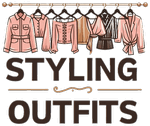Buying glasses online has become a convenient and cost-effective option for many. With a vast selection of frames, customizable lenses, and virtual try-on tools, the process is easier than ever. However, to ensure you purchase the right pair that meets your needs, it’s essential to follow a structured approach. Here’s a comprehensive guide to help you navigate the process.

1. Start with an Up-to-Date Eye Exam
The foundation of any glasses purchase is an up-to-date prescription. Before you start browsing frames, ensure you have:
● A current eye prescription (typically valid for 1-2 years)
● Your pupillary distance (PD) measurement
● Understanding of basic prescription terms (SPH, CYL, Axis)
Remember, your eye doctor is legally required to provide your prescription, so don’t hesitate to ask for a copy. If you don’t have your PD measurement, many online retailers offer tools to measure it at home, though getting it from your eye care professional is most accurate.
2. Understand Your Prescription
Knowing how to read your prescription is crucial for selecting the right lenses. Here are some important factors to keep in mind when selecting your lenses:
Face Shape Compatibility
Prescription in hand, now it’s time for the really fun part: picking the perfect frames! The right glasses do more than make a statement; it’s all about balance: style, function, and comfort. Here are some key points to consider when choosing your frames:
● Round Faces: Soft curves with equal width and height. Choose angular frames (rectangular or square) to add definition. Avoid round frames.
● Square Faces: Strong jawline and broad forehead. Softer, rounded frames (oval or round) help balance sharp angles.
● Oval Faces: Versatile with balanced proportions. Almost any frame style works; feel free to experiment with bold designs.
● Heart-shaped faces: Wider forehead and narrower chin. Opt for bottom-heavy frames or cat-eye styles for balance. Avoid heavy or top-heavy frames.
Understanding your face shape and choosing frames accordingly can make a world of difference in how your glasses look and feel.
Frame Size Matters
A good fit is a matter of comfort and functionality. Ill-fitting glasses will slip off your nose, pinch your temples, or even distort your vision. To ensure a proper fit, pay attention to these three important measurements:
● Lens Width: 40-60 mm. This is the width of each lens and will define how wide a frame will sit on your face. Wider lenses work well with wider faces or for people who want more coverage; narrower lenses with narrower faces.
● Bridge Width: It is the distance between the two lenses placed on the bridge of your nose, normally 14 to 24 millimetres in width. A proper bridge width will eliminate sliding down or pinching when the glasses are put on your nose.
● Temple Length (135-150mm): The length of the temple measures the arms of the glasses, which rest on your ears. This length affects how securely the glasses fit and how comfortable they feel during extended wear.
Material Considerations
The material of your frames not only affects their appearance but also impacts their durability, comfort, and weight. Here’s a breakdown of the most common frame materials and their benefits:
● Metal Frames: Strong, lightweight, and adjustable. Good for durability but may cause issues for those with metal allergies.
● Acetate Frames: Lightweight plastic available in many colours. Stylish and comfortable, with less risk of skin irritation.
● Titanium Frames: A premium option that is very lightweight, durable, and hypoallergenic. Great for sensitive skin and long-lasting.
● TR90 Frames: Flexible and lightweight plastic. Ideal for active users and is resistant to heat and chemicals.
Each material has its own unique advantages, so the best choice depends on your lifestyle, preferences, and budget.
3. Choose Your Frames
Frames are not only functional but a style statement, too. When picking frames:
● Consider Your Face Shape: Frames of certain shapes go well with frames of particular face shapes—for example, round faces look great with angular frames.
● Material Options: Frames come in materials like metal (strong yet lightweight), acetate (fashionable and colourful), or titanium (hypoallergenic and strong).
● Size Matters: Check the measurements on the product page—lens width, bridge width, and temple length—to ensure a proper fit.
Most retailers now offer virtual try-on tools that allow you to see how frames look on your face before buying.
Popular Frame Styles:
● Wayfarer: Wayfarers bring the best of vintage charm together with panache in modern times. Their trapezoidal shape suits most face shapes and is a timeless classic for any setting, be it formal or informal.
● Round Frames: Round frames bring a sense of nostalgia and a statement of individuality. Perfect for those who are creative, round frames soften sharp facial features and give an intellectual flair.
● Aviators: First designed for pilots, aviators have become a fashion statement. In a teardrop shape, they speak volumes of boldness and suit someone looking for an edge yet wanting to keep it sophisticated.
● Rimless Minimalist: Rimless frames exude understated elegance. Light and professional, they subtly bring out the features of the face, leaving a look so clean and polished.

4. Select the Right Lenses
Lenses are just as important as frames when it comes to functionality and comfort. Here’s what to consider:
Lens Types:
● Single Vision Lenses: Correct either nearsightedness or farsightedness with a single prescription throughout the lens. Ideal for reading or distance vision.
● Progressive Lenses: Multifocal lenses provide a seamless shift between near, intermediate, and far vision without visible lines. Perfect for people who need correction at multiple distances.
● Bifocal Lenses: Have two distinct regions—one for distance and one for near vision, which are separated by an apparent line. They are good for people who need assistance with seeing distances.
Lens Features:
● Anti-Scratch Coating: This coating will help save your lenses from everyday scratches, keeping them clear and in working order for much longer. It’s especially useful for those with an active lifestyle or people who handle their glasses often.
● Blue Light Filtering: It helps in reducing eye strain due to prolonged exposure to blue light emitted from screens. Blue light filtering lenses provide comfort during longer use of computers or smartphones; this feature, therefore, is especially helpful for people whose job requires spending long hours working in front of screens.
● Photochromic Lenses: These automatically change with the light, darkening in sunlight and reverting to clear indoors. This eliminates the need for separate prescription sunglasses, like Transitions lenses, hence they are versatile.
● Polarized Lenses: Perfect for outdoor activities, polarized lenses significantly reduce glare from reflective surfaces such as water or roads. The feature will improve your clarity and comfort level; hence, they would be perfect for driving, fishing, or any other outdoor sports activity.
5. Review Your Order Before Checkout
1. Once you’ve selected your frames and lenses: Double-check all details—prescription values, frame size, lens type, and coatings.
2. Look for discounts or promotions; many retailers offer seasonal sales or first-time buyer discounts.
3. Read the retailer’s return policy to ensure peace of mind if adjustments are needed after purchase.
6. Place Your Order
● Confirm All Details: Double-check your order details to make sure that all items and quantities are accurate.
● Securely Add Payment Information: Input your credit card or alternative payment information, making sure to utilize a secure payment system.
● Choose Shipping Options: Select the appropriate shipping method based on how quickly you need your glasses.
● Sit Back and Wait: Most orders arrive within 7 to 14 business days.
Bonus Tips for First-Time Buyers
● If unsure about frame size or style, start with budget-friendly options before investing in high-end designer frames.
● Use virtual try-on features extensively to visualize how glasses will look on your face.
● Contact customer support if you have questions about prescription input or lens options—they’re there to help!
Buying glasses online can save time and money while offering access to styles and features not always available in physical stores. By following these steps—starting with an accurate prescription, choosing suitable frames and lenses, and selecting a reliable retailer—you can confidently purchase the perfect pair of glasses without ever leaving home!
